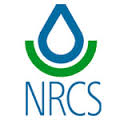
Natural Resources Conservation Service Programs
For information on the following programs contact the Crookston Field Office at: 218-281-2809 or visit the MN NRCS USDA web site.
For the most updated NRCS News Releases, please click HERE
Conservation Reserve Program (CRP)
CRP provides technical and financial assistance to eligible farmers and ranchers to address soil, water, and related natural resource concerns on their lands in an environmentally beneficial and cost-effective manner. The program provides assistance to farmers and ranchers in complying with Federal, State, and tribal environmental laws, and encourages environmental enhancement. The program is funded through the Commodity Credit Corporation (CCC). CRP is administered by the Farm Service Agency, with NRCS providing technical land eligibility determinations, conservation planning and practice implementation.
The Conservation Reserve Program reduces soil erosion, protects the Nation's ability to produce food and fiber, reduces sedimentation in streams and lakes, improves water quality, establishes wildlife habitat, and enhances forest and wetland resources. It encourages farmers to convert highly erodible cropland or other environmentally sensitive acreage to vegetative cover, such as native grasses, wildlife plantings, trees, filter strips, riparian buffers, or small wetland restorations. A CRP contract can last from 10 to 15 years. Farmers receive an annual rental payment for the term of the multi-year contract. Rental rates are based on the soil types of the acreage being offered for enrollment. Cost sharing is provided to establish the vegetative cover practices. For more information visit the NRCS Conservation Reserve Program.
Environmental Quality Incentives Program (EQIP)
EQIP provides technical assistance, cost share payments, and incentive payments to assist crop, livestock, and other agricultural producers with environmental and conservation improvements to their operations. All sign-ups are conducted at the local county level. EQIP is a voluntary conservation program from the USDA Natural Resources Conservation Service. It supports production agriculture and environmental quality as compatible goals. Through EQIP, landusers may receive financial and technical help with structural and management conservation practices on agricultural land. EQIP may pay up to 75 percent of the costs of eligible conservation practices. Incentive payments may be made to encourage a farmer to adopt land management practices, such as nutrient management, manure management, integrated pest management, and residue management. For more information visit the NRCS Environmental Quality Incentives Program.
Wetlands Reserve Program (WRP)
WRP is a voluntary program offering landowners the opportunity to protect, restore, and enhance wetlands on their property. The USDA Natural Resources Conservation Service (NRCS) provides technical and financial support to help landowners. WRP takes marginal cropland with converted or destroyed wetlands and restores the wetlands and plants native grasses on the upland to provide better wildlife habitat. WRP buys a permanent easement on the land offered, but the owner still retains all rights to the land such as hunting and fishing, but none of the land can be developed. For more information visit the NRCS Wetlands Reserve Program.
Conservation Stewardship Program (CSP)
The Conservation Stewardship Program (CSP) is a voluntary conservation program that encourages producers to address resource concerns in a comprehensive manner by undertaking additional conservation activities; and improving, maintaining, and managing existing conservation activities. CSP is available on Tribal and private agricultural lands and non-industrial private forest land in all 50 States and the Caribbean and Pacific Islands Areas. The program provides equitable access to all producers, regardless of operation size, crops produced, or geographic location.
Through CSP, NRCS will provide financial and technical assistance to eligible producers to conserve and enhance soil, water, air, and related natural resources on their land. Eligible lands include cropland, grassland, prairie land, improved pastureland, rangeland, nonindustrial private forest lands, agricultural land under the jurisdiction of an Indian tribe, and other private agricultural land (including cropped woodland, marshes, and agricultural land used for the production of livestock) on which resource concerns related to agricultural production could be addressed. Participation in the program is voluntary.
The entire agricultural operation must be enrolled and must include all agricultural land that will be under the applicant's control for the term of the proposed contract that is operated substantially separate from other operations. For more information visit the NRCS Conservation Stewardship Program.
Welcome to the Web Soil Survey
Web Soil Survey (WSS) provides soil data and information produced by the National Cooperative Soil Survey. It is operated by the USDA Natural Resources Conservation Service (NRCS) and provides access to the largest natural resource information system in the world. NRCS has soil maps and data available online for more than 95 percent of the nation’s counties and anticipates having 100 percent in the near future. The site is updated and maintained online as the single authoritative source of soil survey information.
Soil surveys can be used for general farm, local, and wider area planning. Onsite investigation is needed in some cases, such as soil quality assessments and certain conservation and engineering applications. For more detailed information, contact your local USDA Service Center or your NRCS State Soil Scientis or visit the website at Web Soil Survey.